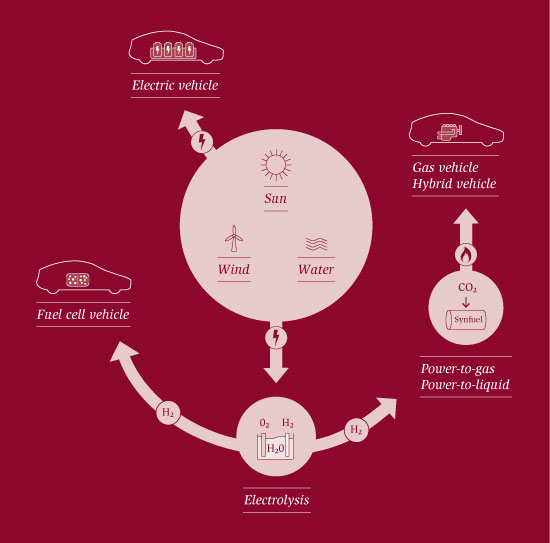This is move
move, the demonstrator for the mobility of the future, shows three exemplary ways in which surplus renewable electricity that cannot be used directly in the electricity market can be used for mobility – in the form of hydrogen, synthetic methane or grid batteries. As for hydrogen, both pure use as a fuel and addition to biogas are studied.
Mobility of the future
According to the Federal Council's "net zero" goal, no more CO2 emissions are to be emitted in Switzerland by 2050. The energy consumption for mobility is to decrease massively and only renewable energy should be used. A CO2 reduction will only be achieved if the renewable energy for mobility is not simply withdrawn from the energy system since it is then lacking in other energy sectors. Instead, unusable, temporarily surplus renewable electricity should be used or renewable energies should be expanded.
For electromobility, the main focus lies on the intermediate storage of electricity in grid or vehicle batteries and the electrolytic conversion into hydrogen for use in fuel cell vehicles. In order to cleanly power conventional (hybrid) vehicles, hydrogen is converted into synthetic fuels using CO2. The carbon dioxide (CO2) for this chemical conversion is taken from the atmosphere. During subsequent combustion in the engine, CO2 continues to be produced - but only just as much as was previously removed from the atmosphere for the production of the synthetic fuel. The carbon cycle is thus closed.
The vehicles used in practice as part of the move projects are equipped with the latest drive concepts and technologies. In addition to optimizing energy conversion and storage technologies, move also aims to show which drive system is best suited to which type of mobility. In the passenger car sector, electric vehicles are considered to be the best choice for short and medium distances – which is the main area of application. For long distances, conventional (hybrid) vehicles powered by synthetic fuels will be a suitable approach. In the commercial vehicle sector, electric vehicles will be used for local applications, hydrogen drives for regional trips as well as medium distances and long-distance applications will be covered by conventional vehicles powered by synthetic fuels.
















